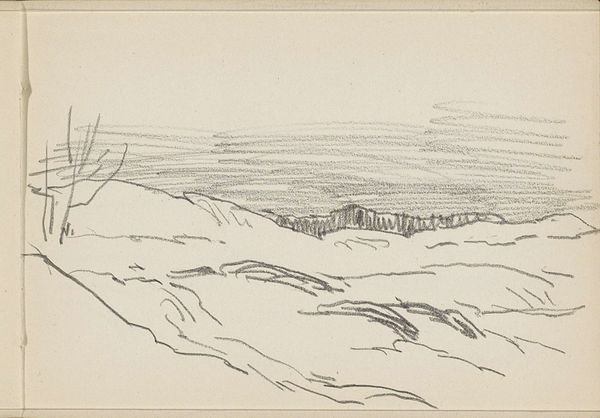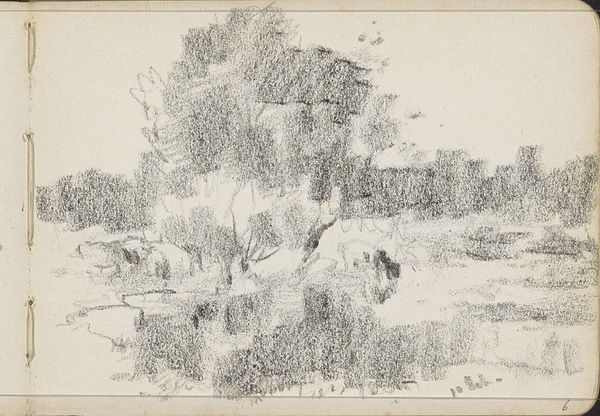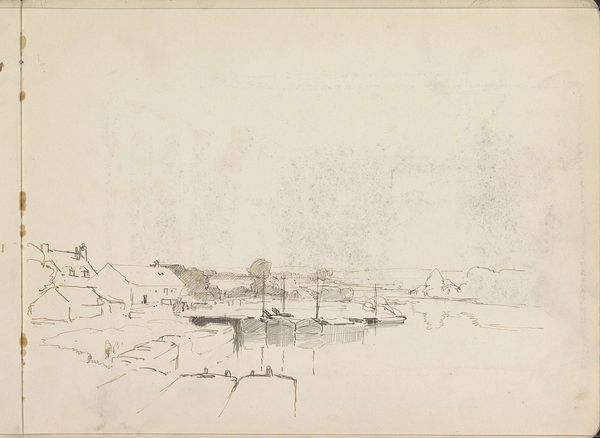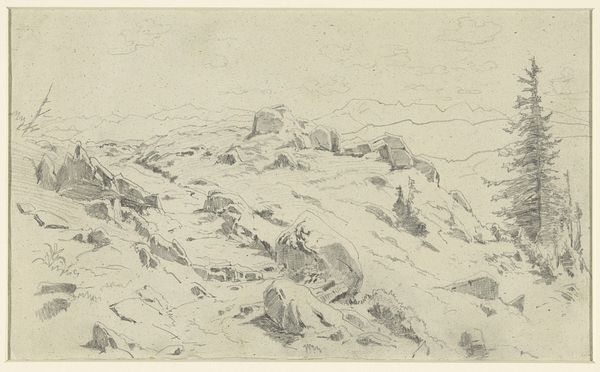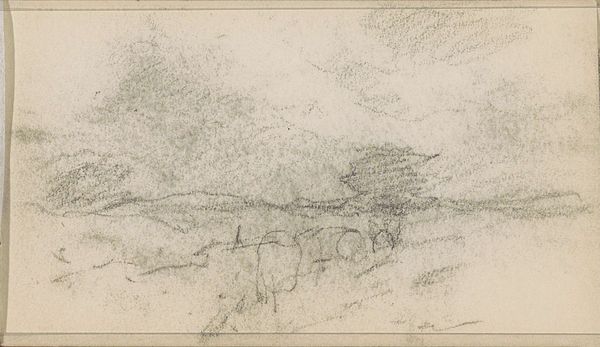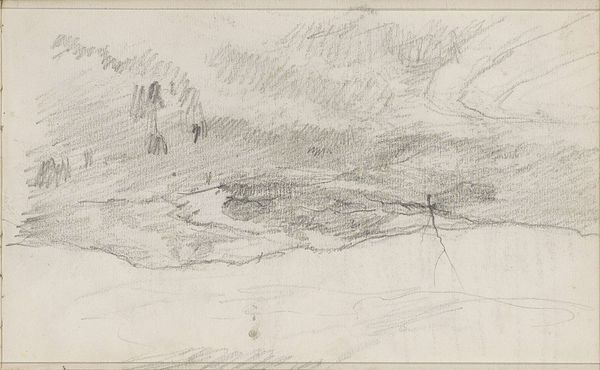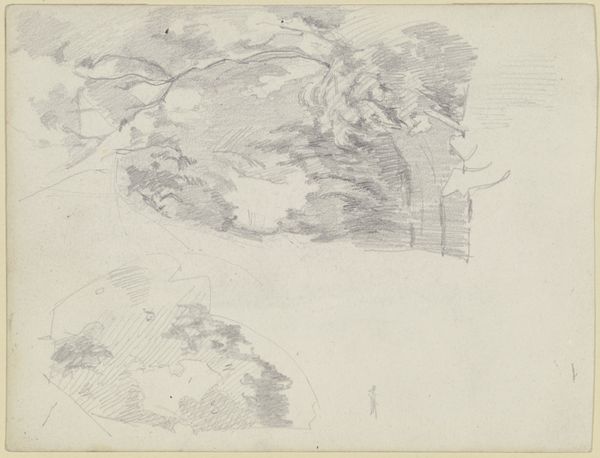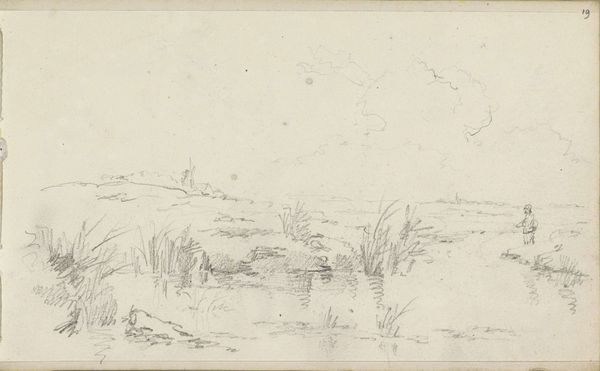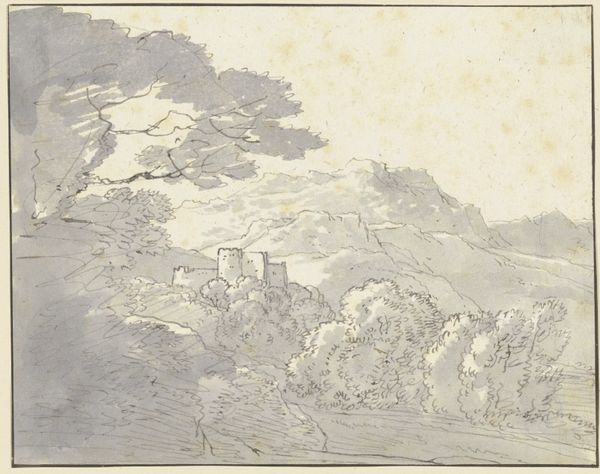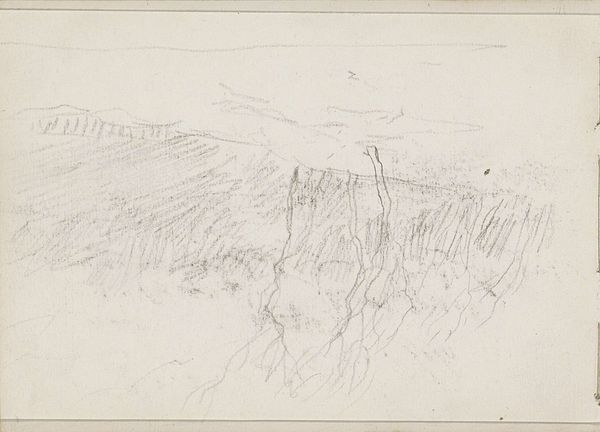
drawing, paper, pencil
#
drawing
#
light pencil work
#
pencil sketch
#
landscape
#
paper
#
forest
#
sketch
#
pencil
#
sketchbook drawing
#
pencil work
#
naturalism
Copyright: Rijks Museum: Open Domain
Editor: This is "Bos," a pencil drawing on paper created sometime between 1865 and 1913 by Bramine Hubrecht. The delicate lines create such a dreamy and serene landscape. What do you see in this piece, looking beyond the surface of trees and sky? Curator: Beyond the literal depiction of the forest, I see a meditation on the artist's relationship with nature and, perhaps, a quiet resistance. Consider the historical context. During this period, rapid industrialization was transforming landscapes. Hubrecht's choice to focus on a pristine, untouched forest could be read as a commentary on this destruction, a yearning for a pre-industrial harmony. Editor: That's a powerful idea, that the landscape itself could be a form of protest. So, the medium -- the humble pencil -- also plays into that? Curator: Precisely. Pencil, unlike the grand oil paints of the establishment, aligns with a more democratic, accessible art. The sketch-like quality suggests immediacy, a direct connection between the artist and her subject. This act of bearing witness through simple means is important; what voices were otherwise suppressed or ignored during this period of transformation? What social class might identify with the medium of "pencil on paper?" Editor: I see it! So, this drawing isn't just a pretty picture; it's speaking to larger issues of the time. Were there many women artists focused on the environment then? Curator: Women artists often found nature to be a sanctioned space for their creativity, while other subject matter might have been considered off limits. Exploring their individual relationships to nature becomes an expression of their broader experience and identity, a commentary on their position in a rapidly changing society. Editor: I never would have thought to look at a simple landscape drawing this way. Curator: Art always speaks to the moment in which it was created. When we explore art in this context, we bring a richer understanding, opening up avenues for empathy, historical critique, and more contemporary considerations for landscape and naturalism. Editor: That’s true, thank you! I will think about the broader story of a work of art in relation to the environment and societal factors more when I go see art from now on.
Comments
No comments
Be the first to comment and join the conversation on the ultimate creative platform.

